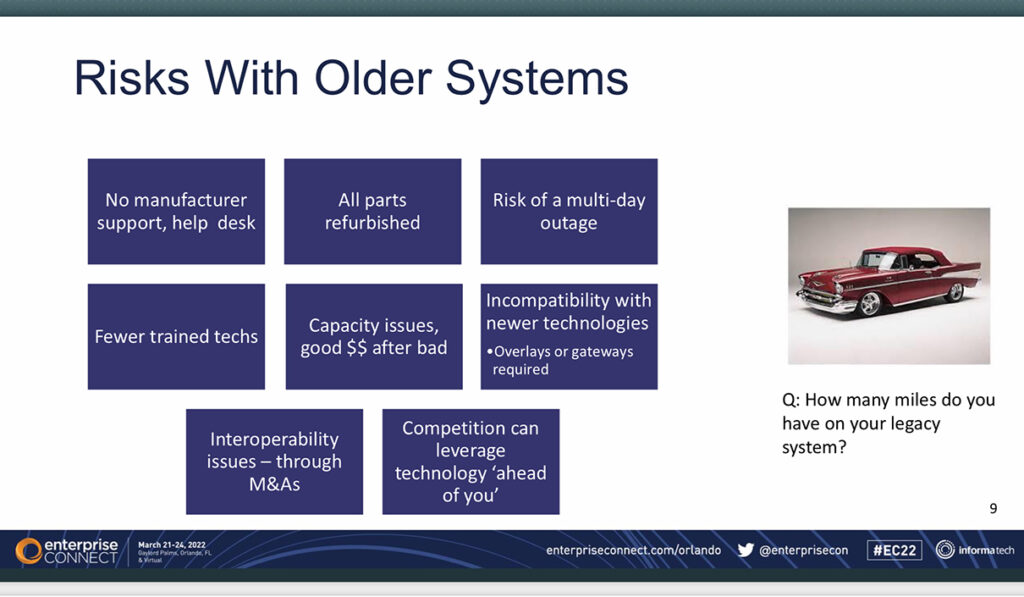Most enterprises still rely primarily on on-premises communications systems, Where there are advantages to maintaining control of organizational data and applications, there are also risks in not moving to the cloud.
“There are still plenty of premise-based systems out there,” said Alaa Saayed,
ICT industry director, Frost & Sullivan, at an Enterprise Connect 2022 session. “The reasons include perceived security threats, the need for regulatory compliance and the reliability of public cloud.”
Saayed said a recent Frost survey found that most businesses will have deployed part or all of their collaborative solutions to the cloud by 2024. “The same survey showed that hybrid environments will dominate,” he added. “What is surprising is that almost 25 percent of businesses will still be deploying predominately on-premise solutions three years from now.”

What are the risks?
However, maintaining on-premise systems raises a major set of challenges, according to panelists at another Enterprise Connect session on “NOT Moving to the Cloud: What Are the Risks?”
A significant portion of the premise UC market, including TDM and VoIP systems are now at end-of-support, said Steve Leaden, president, Leaden Associates, who led a discussion with Paul Gentile, senior director, product marketing, GoTo; Greg Zweig, director of solutions Marketing, Ribbon; Praveen Mamnani, VP product management, RingCentral; and Douglas Knight, senior director, product management, Spectrum.
“Risks associated with end-of-support UC include lack of help desk support,” Leaden said. “Others issues include having purchase refurbished parts, fewer technicians to support your system, raising the risk of a multi-day outage.”
Assessing the risks
Enterprises trying to balance the reliability and familiarity of on-premise systems with the greater flexibility and support from cloud based solutions, should consider these questions when making decisions, according to Leaden.
• Which systems and technologies are already end-of-life or most at risk of becoming stranded investments?
• What timeline should you plan for your migration to the cloud, and what’s the degree of risk for waiting?
• How do you craft a business case for moving to the cloud rather than continuing to “sweat the assets”?
• If your premises-based deployments are still in place, but you rolled out cloud services selectively to deal with the pandemic and remote work, how can you leverage this initial step as you plan a full migration? What are the challenges?
Moving forward
The benefits of cloud-based platforms include greater flexibility, ease of application development, offloading of routine IT tasks, improved disaster recovery capabilities and an operational model that requires less capital, according to the panelists.
For Avaya customers facing cloud migration issue, IAUG offers important peer-to-peer networking benefits, including webinars, podcasts, blogs and regional chapter meetings. There are also informal opportunities to discuss migration strategies with members in your particularly industry Other resources include Avaya and its business partners, who can assist with preparing a customized migration plan.
As Leaden said, “There is a strategy and path forward for managing a migration to the UCaaS/CCaaS cloud. It can deliver a hard ROI that speaks to every chief experience officer and is required for any mid-to-large enterprise.”
